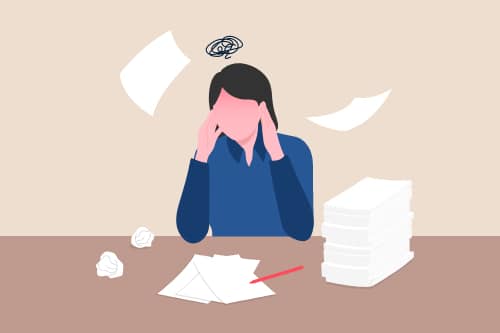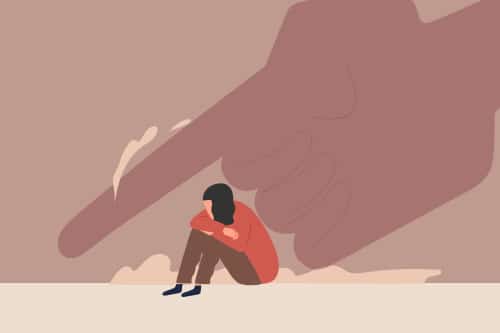What is burnout and how can you manage it?
Summary
Burnout leads to physical and mental exhaustion. It is a state where you feel highly demotivated, hopeless and detached. Understanding the difference between stress and burnout becomes crucial to managing burnout.
Table of content
What is burnout?
Have you ever felt so drained that you are unable to move or think? Have you found yourself feeling tired even without doing anything? You may be undergoing burnout.
Burnout was first coined by psychologist Herbert J. Freudenberger in 1975. According to American Psychology Association, Burnout is a “physical, emotional, or mental exhaustion accompanied by decreased motivation, lowered performance, and negative attitudes toward oneself and others”. Burnout usually happens due to experiencing a constant and prolonged level of stress. Long lasting high pressure circumstances cause your body and mind to wear down.
Burnout does not only happen due to work, there are many other reasons for it. They are relationship burnout, parental burnout, caregiver burnout etc. It can arise due to various factors. Some of them are:
- You feel there is a lot on your plate and there is a lack of support.
- The requirements needed from you are unclear or not communicated well.
- There is a lot of ambiguity.
- Toxic environment
Stress or Burnout?

It’s essential to establish the difference between stress and burnout to manage it effectively.
Stress: An adaptive response for our body towards any demand mostly from the external world. It leads to feelings of pressure, anxiety, fatigue. It can create disappointment with self and or work/relationship.
Burnout: Arises due to prolonged stress along which may be combined with other factors. It causes feeling drained, constant low moods, feeling helpless and detached. Let us look at some more signs of burnout.
Signs of Burnout

- Drained emotionally
- Physical exhaustion along with aches
- Reduced interest in everyday activities
- Pessimism and use of sarcasm
- Decreased satisfaction and dread of failure.
- Increased feelings of detachment from others and self
- Inability to “push yourself forwards” to complete tasks & responsibilities.
- Clouded mind with reduced ability to make decisions.
- Unhealthy coping mechanisms (drinking, smoking, etc)
Wondering if you are burnout? Reach out to our experts here
Reasons for Burnout
Burnout can happen due to multiple factors playing a part. More often than not there might be multiple aspects contributing to this. Here are some domains which can determine burnout. What are some of the areas that resonate with you?
1. Excessive Workload

Increasing demands at work can create extreme stress resulting in burnout if not managed properly. Taking on more tasks that you can handle can increase the pressure. Having more overtime, working over weekends or late nights can take away your time to take off or relax. In relationships, it can arise by one partner taking on more responsibilities without having the other to support or share the burden.
2. Limited Autonomy

Not having enough control or say in matters may lead to stress and feeling unhappy. However, continuous lack of control may lead to burnout. At the workplace, having no control over projects, vague or unclear tasks and being micromanaged. For a caregiver, lack of control may look like being limited by choices of the person and treatment, having less say in important matters.
3. Accolades

Rewards motivate us. Feeling stuck in a relationship where efforts are not appreciated or even spoken up while you are managing multiple things can lead to a state of emotional exhaustion. As important is monetary compensation at work, so are words of affirmation. Workplace burnout may arise when the responsibilities and financial rewards or appreciation has a mismatch between them.
4. High pressure

When stakes are too high, it can lead to a lot of pressure. However, if this constantly occurs, it can lead to burnout. High-pressure and healthcare jobs usually have a higher rate of burnout. A teacher, doctor or a counsellor not only need to perform but also emotionally connect with students and clients. This can leave them emotionally and physically drained.
5. Social support system

As responsibilities increase, one struggles to maintain and have enriching social life. Having no time to interact and connect beyond the workplace or family can lead to feelings of isolation.
Ways to manage burnout

Burnout can be managed by making few changes in your life. Identifying stress and managing it effectively may prevent burnout from taking place. Maintaining a harmony between different aspects of your life like work, family and personal life goes a long way to reduce stress. These are some ways you can prevent and also manage burnout:
#1 Prioritize
One of the most essential skills in today’s busy world is the ability to prioritize different tasks and responsibilities. Use the first day of the week to sit and plan. Divide your tasks and responsibilities based on urgency.
#2 Share workload & chores
Have too much on your plate? Managing multiple things for a long duration can deplete your energy. Ask for help and support. Doing chores together can be a good way to bond and to also help the other person recognize the load.
#3 Check in with your body & mind
Your body and mind shows signs of burnout way before we realise it. Make a daily habit to check in with yourself. Ask what does my body need right now?- Do I need to breathe deeply? “What is causing me to feel this way?”
#4 Communicate
Communication is the key to bring about a change. Identify if you have a tendency to engage in people pleasing behaviors. Understand the implications of it and how it contributes to your burnout. Manager giving more tasks than you can handle? Learn to say no assertively. Set your boundaries.
#5 Socialise
Humans are social beings. Connecting with others even virtually can help you manage burnout. Recognise if you have started to isolate yourself. Make an effort to chat or call at least 1 close person in a week. Take time to reconnect with your partner or friends.
#6 Self Care
You cannot pour from an empty cup. Take frequent breaks to help your mind relax for a while. Dedicate 15 minutes in your day to do some form of self care. If you are a caregiver for aging, ill or differently able individuals, it becomes essential for you to give priority to yourself.
Conclusion
Prolonged unmanageable stress can lead to burnout. Burnout can feel mind numbing and wearied out. With effective strategies and seeking professional guidance can help in preventing burnout.
Frequently Asked Questions
As work and life has integrated due to pandemic, the chances of facing a burnout has risen. With adequate time management and prioritization, you may be able to stress before it leads to burnout.
High pressure environment can be time and energy consuming. Taking short breaks, prioritizing and setting work time boundaries can help to manage chances of burnout
Caregiver burnout is very common. When you are taking care of another person who requires constant supervision and help, it can be quiet draining. Take out some time for yourself and ensure you are getting enough sleep too. If possible, look out for individuals who can take turns with you to help you out.
